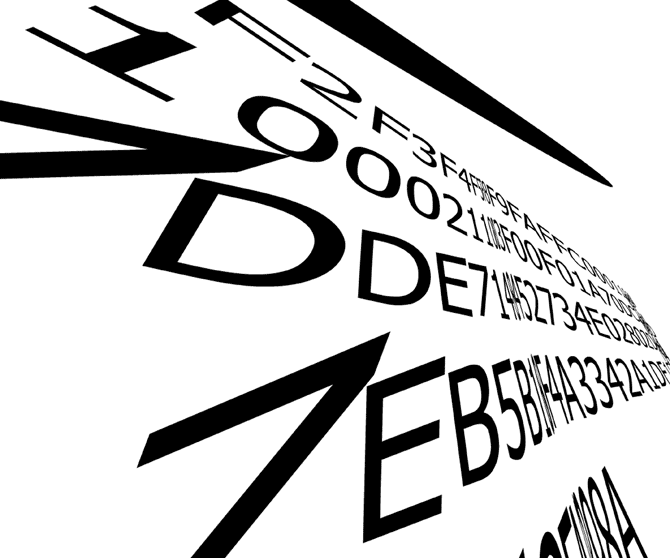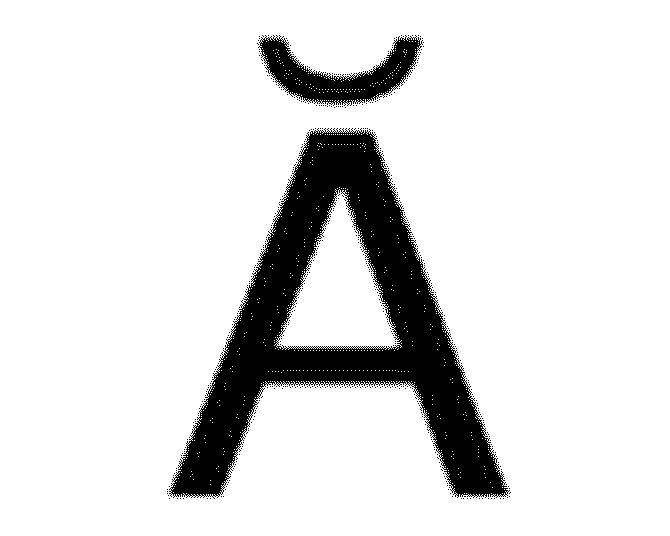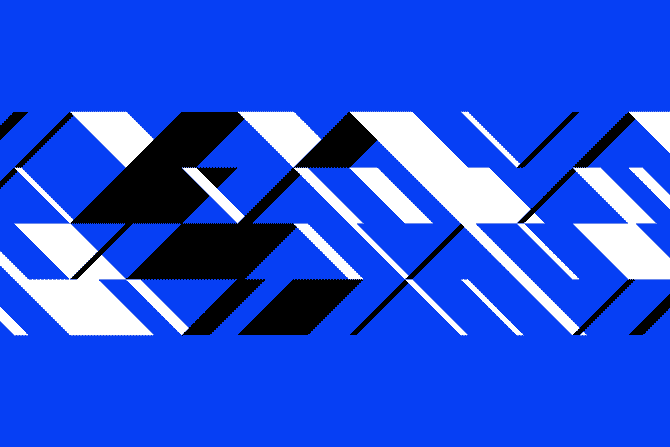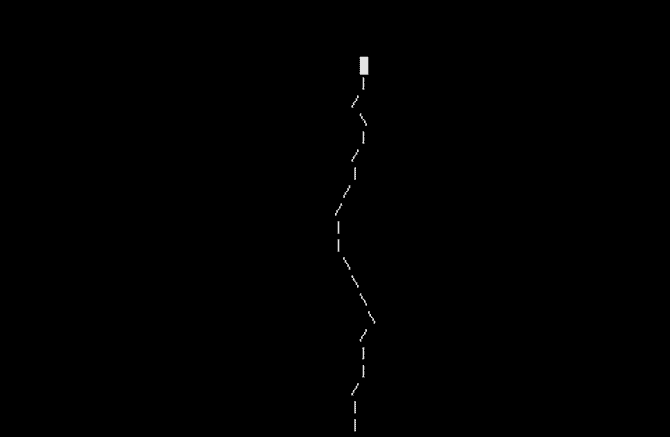|
| |
Pace Digital Gallery is pleased to present Codings
Feb 28th - March 30th, 2012
panel with the artists and curator, and opening reception, Feb 28th, 5 - 7pm
**NOTE** Gallery hours for this show are Mon - Thurs, 12 - 5pm

Codings shows the computer as an aesthetic, programmed device that computes on characters. The works in the show continue and divert the traditions of concrete poetry and short-form recreational programming; they eschew elaborate multimedia combinations and the use of network resources and instead operate on encoded letters, numbers, punctuation, and other symbols that are on the computer itself.
Scroll down for artists works or click here to download catalogue pdf (6MB)

image: Code Movie 1, Giselle Beiguelman (Brazil), Digital video
Many videos incorporate digital images; _Code Movie 1_ displays JPEG images not as the standard rectangles of color, but as black-and-white hexadecimal code. The letters A through F join decimal digits 0 through 9 to compose a large base 16 number that corresponds to a JPEG image. By transcoding the image, _Code Movie 1_ takes a view that can apply to any digital object. The moving and rippling fields of characters show that these characters, although usually unseen, are in play whenever images appear - even in their more conventional manifestations.
Giselle Beiguelman is a new media artist and curator who teaches Art
History and Design at the Architecture and Urbanism Faculty of the
University of Sao Paulo. Her work has been presented in international
venues such as Net_Condition (ZKM, Karlsruhe), el final del eclipse
(Fundacion Telefonica, Madrid), The 25th Sao Paulo Biennial, Algorithmic
Revolution (ZKM), 3rd Sevilla Biennial, Transitio_MX (Mexico), YOU_ser
(ZKM), Geografías Celulares (Fundacion Telefonica, Buenos Aires and Lima),
artemov and FILE (Brazil) and Visual Foreign Correspondents (Berlin). She was
curator of Nokia Trends (2007 and 2008), of the Brazilian participation in
ISEA Ruhr (2009) and of the on-line festivals HTTPvideo and HTTPpix (2010). She
was artistic director of the Sergio Motta Institute (2008-2011) and professor
in the graduate program in communication and semiotics of PUC-SP (Sao Paulo,
2001-2011) and is the editor of seLecT magazine.
Giselle Beiguelman's website

image: 10 PRINT CHR$(205.5+RND(1); : GOTO 10, Commodore Business Machines, Inc. (Canada/USA), BASIC program
A three-line version of this program appeared in original 1982 _Commodore 64 User's Guide:_ 10 PRINT "{CLR/HOME}" / 20 PRINT CHR$(205.5 + RND(1)); / 40 GOTO 20. This is one of many BASIC short programs, for this and other computers, that have been entered by users seeking to puzzle their friends, to learn more about computing, and to see aesthetically pleasing output. The program, which produces its visual effect by using two characters in the PETSCII character set, is the topic of an MIT Press book by Nick Montfort, Casey Reas, and eight others that is to be published in Fall 2012 and is entitled _10 PRINT CHR$(205.5+RND(1); : GOTO 10_. The program is also the inspiration for the work by Reas in this show, _10 PRINT._
Founded as the Commodore Portable Typewriter Company by Jack Tramiel in 1954 in Toronto, this company moved to the U.S. and went into the calculator business. It went on to market some of the most successful and influential early home computers, including the Commodore PET, the VIC-20, the Commodore 64 (the best-selling single model of computer ever), and the Amiga. Commodore went bankrupt in 1994 and was liquidated.

image: Autonomous Parapoetic Device, Adam Parrish (USA), Electronic device including an LCD screen, ATmega168 microcontroller, and Arduino program
This self-contained device, which can be run on battery power, is a portable poetry-generating machine. When carried by a user, the generated stanzas are juxtaposed with whatever environments the bearer is passing through, just as those listening to a portable music player bring the sounds they are listening to into contact with the architectural or natural spaces they inhabit. The 20x4 character monochrome LCD display enforces a more austere constraint on the generated text than does the computer or mobile phone screen, but Parrish has nevertheless programmed the device to produce compelling language.
Adam Parrish is a computer programmer, game designer, and experimental writer.
He is chief software architect at social media startup Socialbomb and an
adjunct professor at New York University's Interactive Telecommunications
Program.
Adam Parrish's website

image: Unicode, Jörg Piringer (Austria), Digital video
This video shows all displayable Unicode characters the range 0-65536, one character per frame. The 49571 characters that are shown appear as they are listed in the international Unicode standard, the first volume of which was published in October 1991. Unicode was developed to supersede earlier, incompatible character encodings. The current version, 6.1, encodes characters from practially all writing systems in current use. Piringer's recitation of the German alphabet accompanies the video, one letter per one or two frames.
Jörg Piringer, born in 1974, is currently living in Vienna, Austria. He is a member of the
Institute for Transacoustic Research and the Vegetable Orchestra. He earned a masters degree
in computer science and works as a freelance artist and researcher in the fields of electronic
music, radio art, sound and visual electronic poetry, interactive collaborative systems,
online communities, live performance, sound installation, computer games, and video art.
Jörg Piringer's website

image: 10 PRINT, Casey Reas (USA), Processing program
This is a program in Processing, a system initially developed by Reas and Ben Fry at the MIT Media Lab. It explores some of the visual ideas in the Commodore 64 program that is included in this exhibit, displaying a maze-like pattern whose colors and structure are derive from the maze generated by that simple BASIC program. In this work, however, the parameters that generate these visuals can be changed by simply pressing a key while the program is running. By default, programs in Processing, like BASIC programs and Web pages, can be inspected and modified by users.
Casey Reas lives and works in Los Angeles where he is a professor at UCLA's Department
of Design Media Arts. His software, prints, and installations have been featured in
numerous solo and group exhibitions at museums and galleries in the United States,
Europe, and Asia. Casey co-founded Processing, an open source programming language
and environment for artists and designers, in 2001 while studying at the MIT Media Lab.
Casey Reas' website

image: Microcodes, Páll Thayer (Iceland/USA), Perl programs
This series of short programs is in Perl, a language that is well-suited to text processing and which some find obscure, others delightful, and yet others both. (Perl is standard on Mac OS X and Linux systems and is available as free software for Windows.) The Microcodes programs can be read based on their titles, and based on their code, and by considering how they function when they are run. They engage programming, textual practices, and visual art, all while working within the confines of a character-based terminal window. The example code and execution snapshot that is shown here is from "The path to enlightenment."
Páll Thayer is an Icelandic/American artist who works with computer programming code
as an artistic medium. He studied visual arts at the Icelandic College of Arts and
Crafts and the Helsinki Academy of Art and received an MFA in Open Media at Concordia
University, Montreal in 2008. He has been active within the computer based art scene
since the late 90s. He has exhibited and presented his work at festivals and galleries
around the world including New York, Montreal, Copenhagen and Sao Paulo. He currently
works as a computer programmer and lecturer at SUNY Purchase College in New York.
Páll Thayer's website
